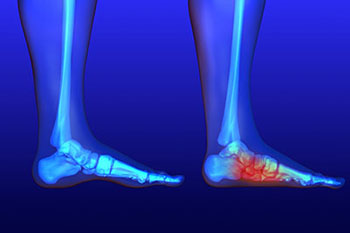Flat Feet

What are flat feet?
When the arch of your foot is flat instead of curved, you have flat feet. This podiatric condition is usually hereditary and develops in childhood.
You can also develop flat feet as an adolescent or adult following an injury or from general wear and tear. If you are overweight or have a condition like rheumatoid arthritis or diabetes, your risk of developing flat feet later in life increases.
What problems are caused by flat feet?
Flat feet cause foot pain that’s most severe along the bottom of your foot. This condition and the pain it causes can affect the way your foot moves when you walk, which leads to pain in your ankles, knees, and hips.
When flat feet and pain disrupt your gait, you may experience back pain or develop blisters and calluses where your feet rub against your shoes. Flat feet can also cause swelling and pain in your ankles.
How are flat feet diagnosed?
Dr. Mbanuzue diagnoses flat feet with a comprehensive exam. She watches you stand and walk and feels your feet and ankles for abnormalities.
She may also perform a quick and painless footprint test. First, you get your feet wet, and then you step onto a surface to leave a footprint. A foot with a normal arch leaves a print where oblong shapes from the ball and heel of your foot are connected by a thick line from the outer edge of your foot--resembling a kidney bean. If you have flat feet, your footprint looks more like an oval pancake with toes.
How are flat feet treated?
Dr. Mbanuzue provides customized treatment to address your specific needs. For example, she often suggests custom orthotics to deliver support precisely where your feet need it. She also teaches you exercises and stretches to keep your feet supple and strong. These exercises also improve your gait and reduce your risk of radiating pain in your legs, hips, and back.
If you’re concerned about flat feet or suffer from foot pain, call or make an appointment online today to meet with Dr. Mbanuzue for expert diagnosis and treatment.

